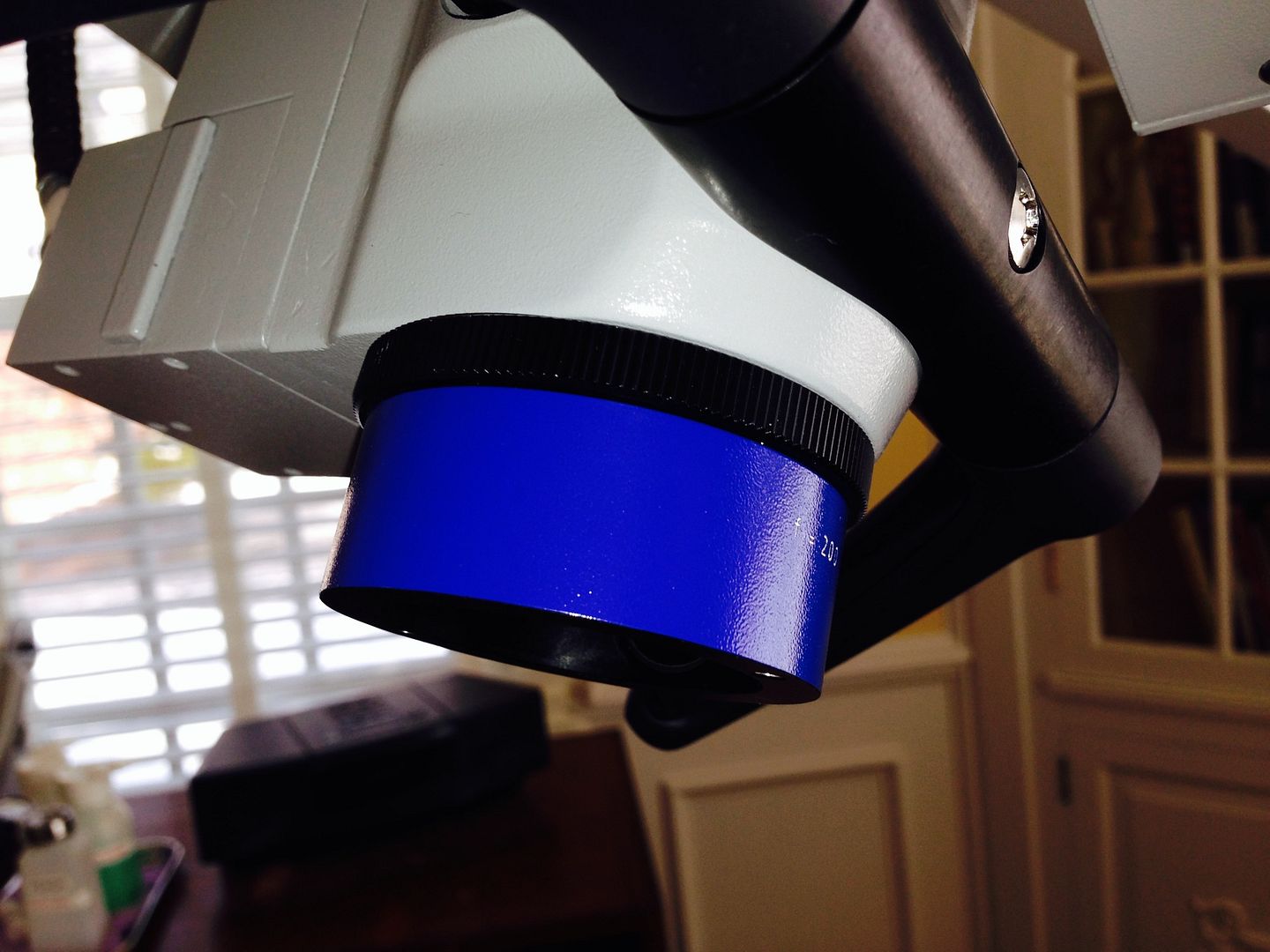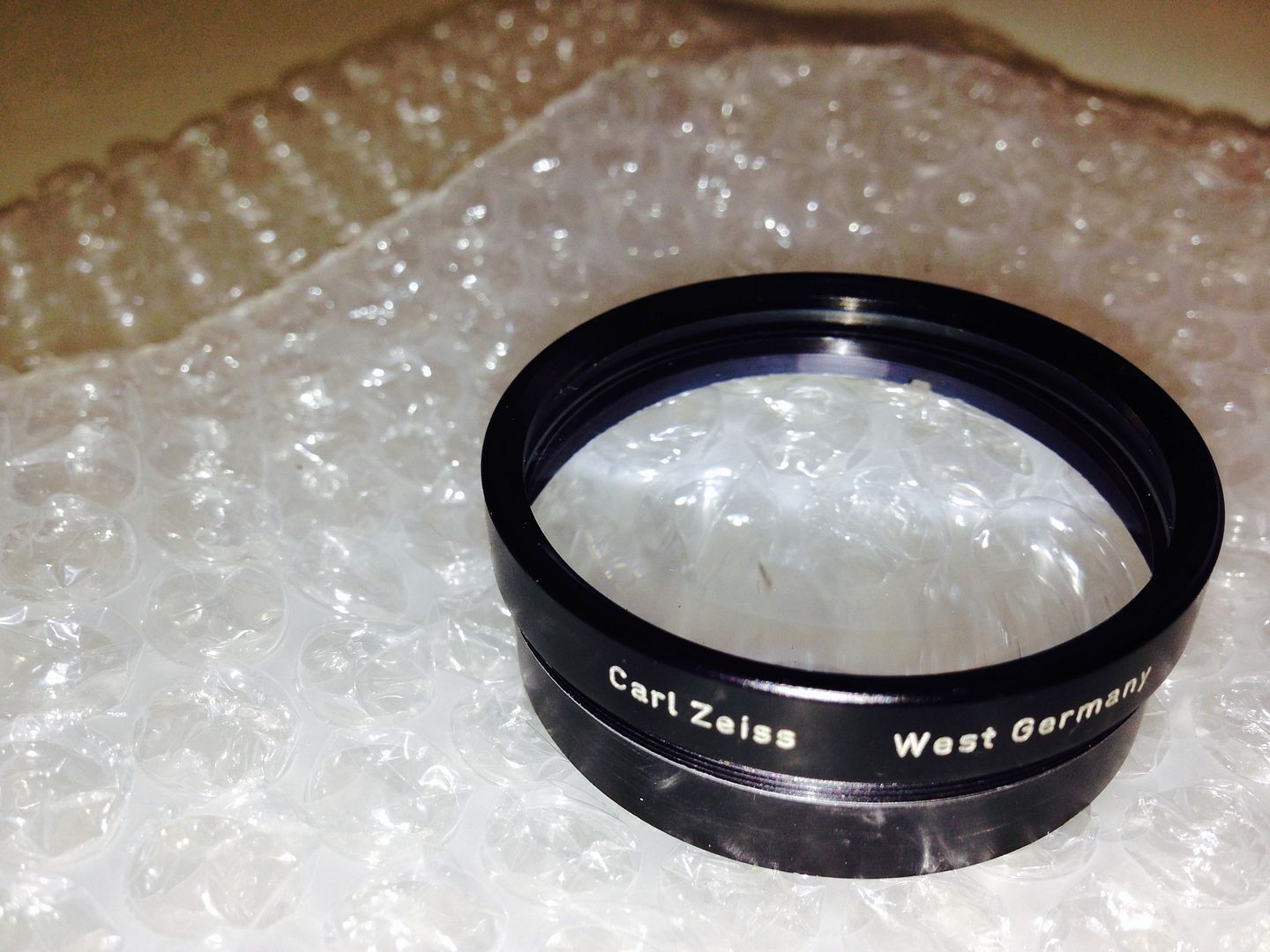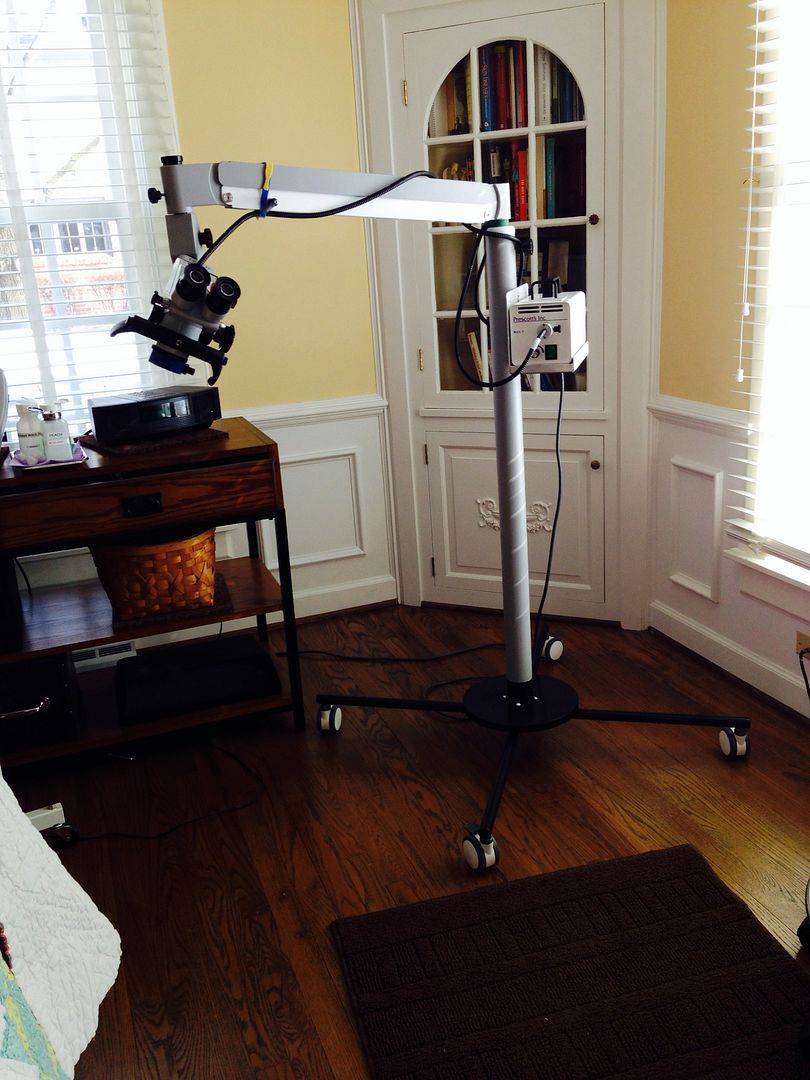Mairi -
I did try a Zeiss Primo for a couple months, but the first month didn’t count. This is what it looked like:
A very, very nice representative from Prescott’s set me up with the scope and taught me some specifics on its use. The problem I had for the first month was related to having the wrong objective lens. It was 200 mm lens and my arms were not long enough to reach my client as I zeroed in on the hair. It took a month to figure out what the problem was. The blue part is the objective lens, with a fine adjustment knob.
I tried a 125mm lens, with a working distance of 5", which was better, but too close.
I think I would have been better off with a 150 mm lens, but they didn’t have one for me to try. No matter what, the stand that the scope was mounted on was called a missionary stand that they use in Africa. They pack it up, piece by piece and pack it in a gigantic black suitcase so it can be easily moved. It had a huge 3 foot base on wheels and was hard to maneuver as many times as I need to during an appointment. I would get things in focus and then it would move on me. Looks like this:
I loved the halogen light source. It was a round circle of light that didn’t blind he client and it wasn’t too warm. The source of the light comes from this box.
It has a fiber optic line that plugs into the scope. Fabulous light. Loved it!
I didn’t purchase the scope because it took too long to maneuver and focus and I felt like the stand was too cumbersome and unwieldy. One minute I was excited because I could see so well and insertions were unbelievably easy, even on the blondest, finest hairs. For the next group of hairs, I would move and focus, but it would take me too long to get it just right. I was very frustrated and a paying client wouldn’t like it if I was fiddling with the scope too much.
This scope had 0-60 incline binoculars, meaning, I could keep my head straight, even though I was really looking down at the area of hair. That is worth the extra money. Very nice. Looks like this:
If there was some way I could check out other scopes, with options like the 200 mm lens had, with the fine adjustment knob, that is used after the gross adjustment is done, I think I could settle on something that was right for me.
I already see quite well with my loupes, so I’m not in dire need to buy a scope, but like you, these long appointments wear on my nose. In the last two days, I have logged in 17.5 hours of work. Sixteen hours was on one client. This is why I wanted a scope, but it was not to be. That is why I now will only work on one client about five hours straight. Today was an exception for a very special client.
Be very sure when you buy a scope. They are not meant for everybody, I am told. I used the Zeiss endoscope above, but maybe I need to try a colposcope with the right lens for me? I gave it a good try and my rep, Dustin, was so very patient and helpful. I wanted so much to write him a check and be on my way to another dimension of magnification, but it wasn’t right for me. The cost would have been between $8,000 and $10,000 for a used scope, 1990’s vintage, something I couldn’t justify doing unless I was over the top happy with using it successfully.
I hope you have a better outcome than I did.
If someone would listen to me, I think I could help design the perfect scope for electrologist’s.





